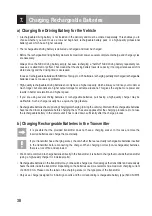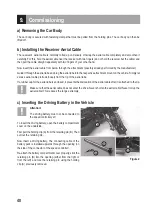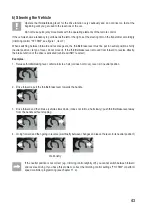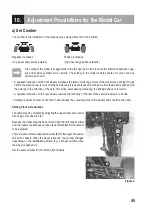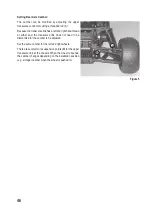
45
10. Adjustment Possibilities for the Model Car
a) Set Camber
The camber is the inclination of the wheel level as viewed from the front (vertical).
Negative inclination
Positive inclination
(Top wheel edge points inwards)
(Top wheel edge points outwards)
The setting of the wheel is exaggerated in the two figures in order to make the difference between nega-
tive and positive cambers more obvious. The setting on the model vehicle should of course not be as
extreme as shown!
• A negative inclination of the front wheels increases the lateral cornering powers of the wheel when driving through
bends, the steering reacts more directly and steering forces are reduced. At the same time the wheel is pushed onto
the axle leg in the direction of the axle. This stops axial bearing clearance, the driving behaviour is calmer.
• A negative inclination on the rear wheels reduces the tendency of the rear of the vehicle to swerve in bends.
• Setting a positive camber on the other hand reduces the cornering force of the wheels and should not be used.
Setting Front Axle Camber:
The camber can be modified by adjusting the upper transverse control
arm using a threaded rod (A).
Because the transverse link has a left and right hand thread at either
end, the transverse link does not need to be dismantled for the camber
to be adjusted.
There are several more suspension points (B) for the upper transverse
link at the chassis. When the wheel rebounds, the camber changes
depending on the installation position (e.g. stronger camber when
the wheel is pushed in).
Set the same camber for the left and right wheels.
Figure 4
A
B
A
B
Содержание 23 72 40
Страница 119: ...118 ...
Страница 120: ...119 ...








